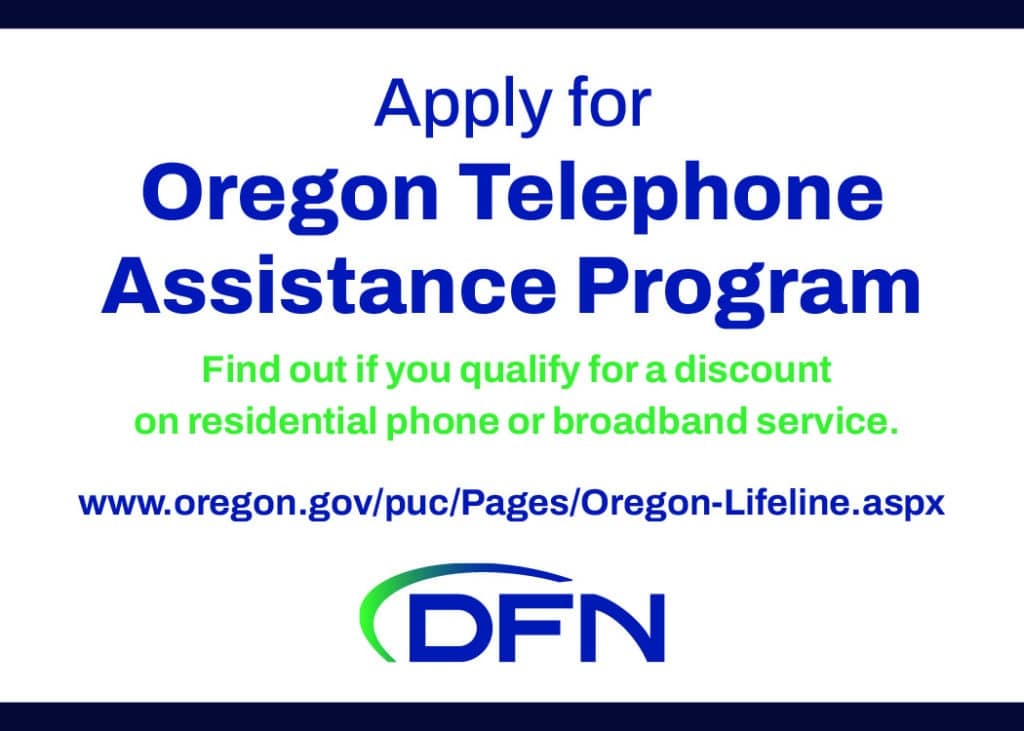In the 21st century, having access to fast, reliable internet is now just as essential to every household in America as telephone service was in the 20th century. But your neighbors at DFN also understand that many families struggle to pay household bills, especially with rising prices associated with global turmoil and economic uncertainty.
Fortunately, there are programs that help families with their telephone and internet service bills, including one prominent program you may not know about: Lifeline. Below we discuss the Lifeline program, including whether you or your loved ones are eligible for its benefits. We then discuss those benefits in further detail so you can decide if applying for the program is a good choice for you.
The Basics of the Lifeline Cost-Savings Program
Let’s begin with a few basics about the Lifeline program. At its core, Lifeline is a government program that assists qualifying low-income households by providing them a credit on their monthly telephone, cell phone and/or internet bill.
Originally designed to help customers with the costs of their landline telephone service, most states have expanded its benefits to broadband internet and even cell phone lines as well. The monthly credit amounts vary depending on the service, and we will discuss those differences below.
Additionally, Lifeline’s benefits only apply to customers using an incumbent local exchange carrier (ILEC) for your service. While this sounds quite complicated, “ILEC” mostly means the company was your area’s original phone company. Thus, DFN may or may not be the ILEC for your area, even if we provide broadband to your home.

So, as you consider whether to apply for Lifeline, be sure to check first if your internet service is provided by an ILEC. You can always reach out to the friendly customer service representatives at DFN for assistance and more information about this or any other question you may have.
Qualifying for Lifeline’s Benefits
Participation in the Lifeline program depends on one of two different factors: 1) certain low-income level thresholds, or 2) whether an individual already utilizes certain other government assistance programs.
Specifically, to meet the income-based qualification, a customer’s income must be at or below 135% of the federal poverty guidelines. The guidelines’ dollar amount usually changes every year, but you can check the federal Department of Health and Human Service’s Poverty Guidelines webpage for the latest information.
The other way to qualify for Lifeline is through participation in other federal assistance programs. Qualifying programs include Federal Public Housing Assistance, Medicaid, the Supplemental Nutrition Assistance Program (SNAP), Supplemental Security Income, and the Veterans and Survivors Pension Benefit. Additionally, there are several Tribal Programs that qualify families for Lifeline, as well. If you already receive benefits under any of these programs, you are eligible for Lifeline.
To speed up the qualification process, the government offers a helpful tool to determine consumers’ eligibility through a website called Lifelinesupport.org. From there, simply navigate to the “Apply Now” button, which takes you to another page to verify if you meet the requirements for Lifeline’s benefits. Just follow the instructions and steps and you are on your way!
Lifeline’s Monthly Benefits
If you’re deemed eligible for Lifeline, the program provides a credit that will appear every month on your bill, lowering your monthly costs. The credit can apply either to “voice” services (i.e., your landline telephone service or to cell phone service), or to internet service. However, Lifeline’s monthly credit cannot apply to both voice and internet service. Thus, customers must choose to apply their Lifeline monthly credit to one service or the other—not both.
The Lifeline credit for voice services (landline or cellphone) is $5.25 per month. For internet service, Lifeline’s benefits are a bit more generous. Indeed, a Lifeline credit can save up to $9.25 a month off the cost of internet service (or bundled services, like landline and internet). That’s a savings of $111 per year, which many families will most certainly appreciate.
How Lifeline Compares to Other Cost-Assistance Programs
Beyond Lifeline, other programs exist to help families pay for their telecommunications services, including the more recently created Affordable Connectivity Program (ACP). Like Lifeline, the ACP also provides monthly credits toward telephone, cell phone and internet service.
Some of the ACP’s monthly benefits may be even more generous than Lifeline (including up to a $30 monthly credit for internet service for qualified applicants). Best of all, if a consumer is already eligible for and enrolled in Lifeline, they’re also eligible for ACP. In short, they can claim both credits from both programs!
However, because the ACP is a newer program (established only in 2021), its funding source is less well-established than the long-standing Lifeline program. Thus, eligible customers should consider taking advantage of the ACP’s subsidies while they still can.
The Lifeline program can help many lower-income customers keep up with the internet age. Please reach out DFN should you have any questions about Lifeline and its benefits or if we can assist you with your home internet service in any way.
Apply here: https://www.oregon.gov/puc/Pages/Oregon-Lifeline.aspx
